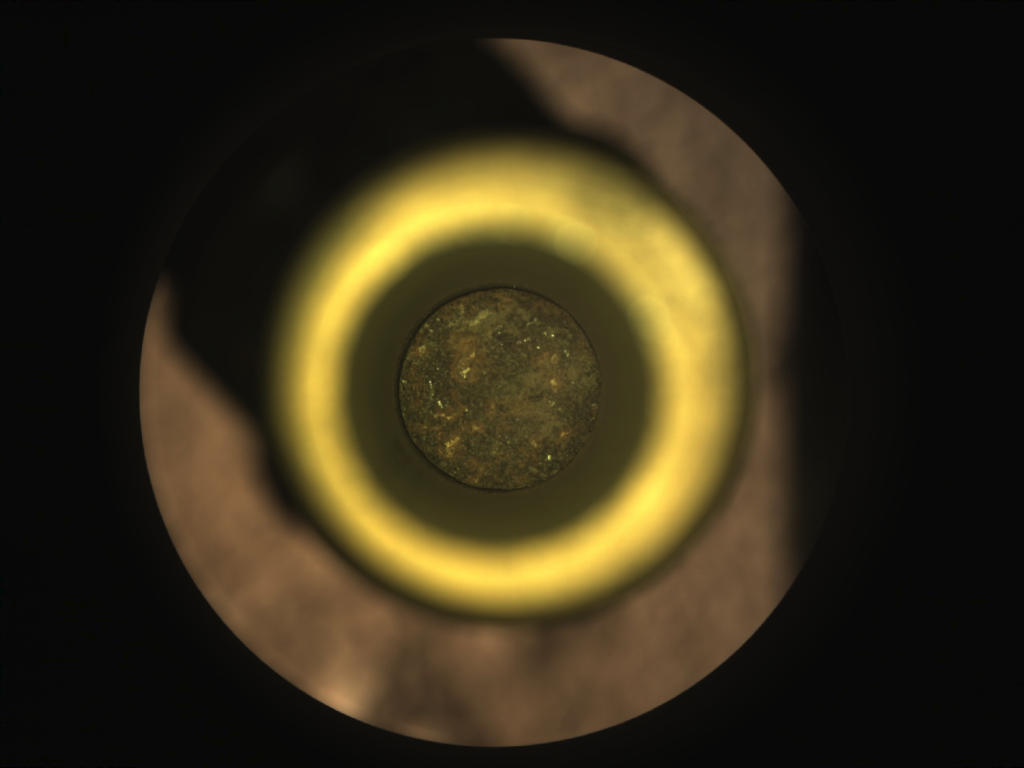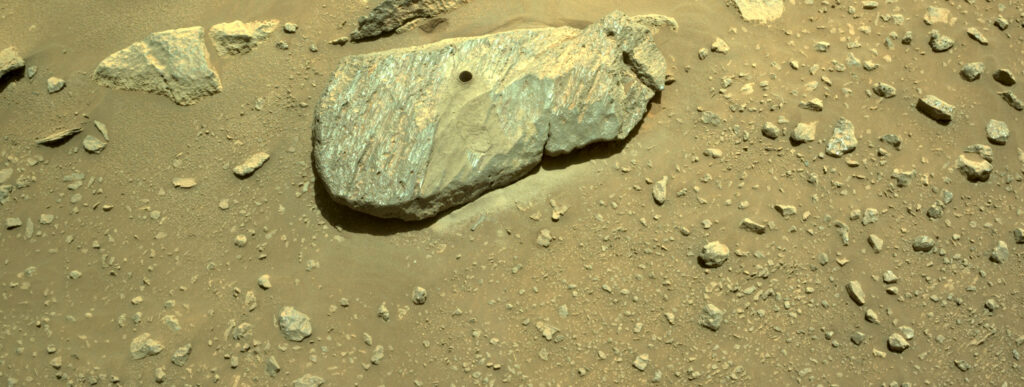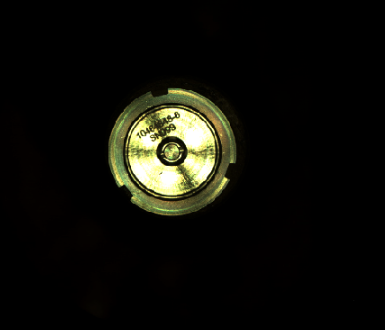
The core is essentially the first-ever rock sample collected from another planet with the intention of bringing it to Earth.
Mars Rover Perseverance has successfully collected its first rock sample from the red planet, NASA confirmed on Monday.
Check this article: NASA’S NEXT GEN MARS 2020: PERSEVERANCE ROVER
The US space agency said the rover had drilled into a think slab called ‘Rochette’ after which there were a few anxious days when many thought the core might have been dropped. But now the new images have confirmed the sample safely inside the drill mechanism.

This is the second rock collection attempt by the Perseverance after it previously tried to collect on August 5. But at that time, the chosen rock turned out to be too soft.
But the job of the rover is not done yet. It has to collect more than two dozen similar rock samples over the next year.
The official Twitter account of NASA’s Perseverance Mars Rover shared pictures of the drilling process and the sample that was stored and sealed.
It’s official: I’ve now captured, sealed, and stored the first core sample ever drilled on another planet, in a quest to return samples to Earth. It’s the first in a one-of-a-kind Martian rock collection. #SamplingMars
— NASA's Perseverance Mars Rover (@NASAPersevere) September 6, 2021
Read more: https://t.co/bs4Hd4Fzyw pic.twitter.com/2jwF7cOcMZ
The core is now enclosed in an airtight titanium sample tube, making it available for retrieval in the future. Through the Mars Sample Return campaign, NASA and ESA (European Space Agency) are planning a series of future missions to return the rover’s sample tubes to Earth for closer study. These samples would be the first set of scientifically identified and selected materials returned to our planet from another.
Check this article: NASA’S AND ESA’S MARS ROVERS TO BRING SAMPLES BACK TO HOME FROM MARTIAN SURFACE

“NASA has a history of setting ambitious goals and then accomplishing them, reflecting our nation’s commitment to discovery and innovation,” said NASA Administrator Bill Nelson. “This is a momentous achievement and I can’t wait to see the incredible discoveries produced by Perseverance and our team.”
The sample-taking process began on Wednesday, Sept. 1, when the rotary-percussive drill at the end of Perseverance’s robotic arm cored into a flat, briefcase-size Mars rock nicknamed “Rochette.”
After completing the coring process, the arm maneuvered the corer, bit, and sample tube so the rover’s Mastcam-Z camera instrument could image the contents of the still-unsealed tube and transmit the results back to Earth. After mission controllers confirmed the cored rock’s presence in the tube, they sent a command to complete processing of the sample.
Yesterday, at 10:04 AM IST(4:34 AM UTC, 12:34 AM EDT), Perseverance transferred sample tube serial number 266 and its Martian cargo into the rover’s interior to measure and image the rock core. It then hermetically sealed the container, took another image, and stored the tube.
“With over 3,000 parts, the Sampling and Caching System is the most complex mechanism ever sent into space,” said Larry D. James, interim director of JPL. “Our Perseverance team is excited and proud to see the system perform so well on Mars and take the first step for returning samples to Earth. We also recognize that a worldwide team of NASA, industry partners, academia, and international space agencies contributed to and share in this historic success.”
Check this article: WRIGHT BROTHERS MOMENT FOR NASA’S MARS HELICOPTER
For all latest news and updates on Perseverance rover and Ingenuity check this page here
